At what point is vaccination coverage in Italy. Gimbe Report
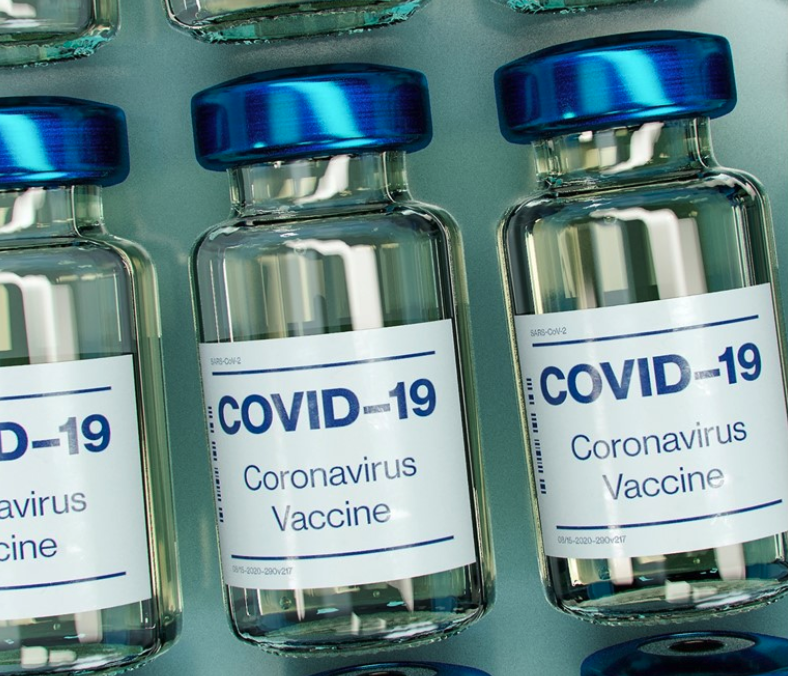
Vaccination coverage by age group with at least one dose of vaccine is highly variable: from 96.7% of the over 80s to 70.4% of the 12-19 age group. Numbers, comparisons and scenarios on the vaccination campaign according to the latest report by the Gimbe Foundation chaired by Nino Cartabellotta
THE INTEGRAL REPORT OF THE GIMBE FOUNDATION ON VACCINATION COVERAGE IN ITALY:
The independent monitoring of the Gimbe Foundation detects in the week 29 September-5 October 2021, compared to the previous one, a decrease in new cases (21,060 vs 23,159) (figure 1) and deaths (311 vs 386) (figure 2). Currently positive cases are also decreasing (90,299 vs 98,872), people in home isolation (86,898 vs 94,995), hospitalizations with symptoms (2,968 vs 3,418) and intensive care (433 vs 459) (Figure 3). In detail, compared to the previous week, the following changes were recorded:
- Deaths: 311 (-19.4%), of which 22 referred to previous periods
- Intensive care: -26 (-5.7%)
- Hospitalized with symptoms: -450 (-13.2%)
- Home isolation: -8,097 (-8.5%)
- New cases: 21,060 (-9.1%)
- Currently positive cases: -8.573 (-8.7%)
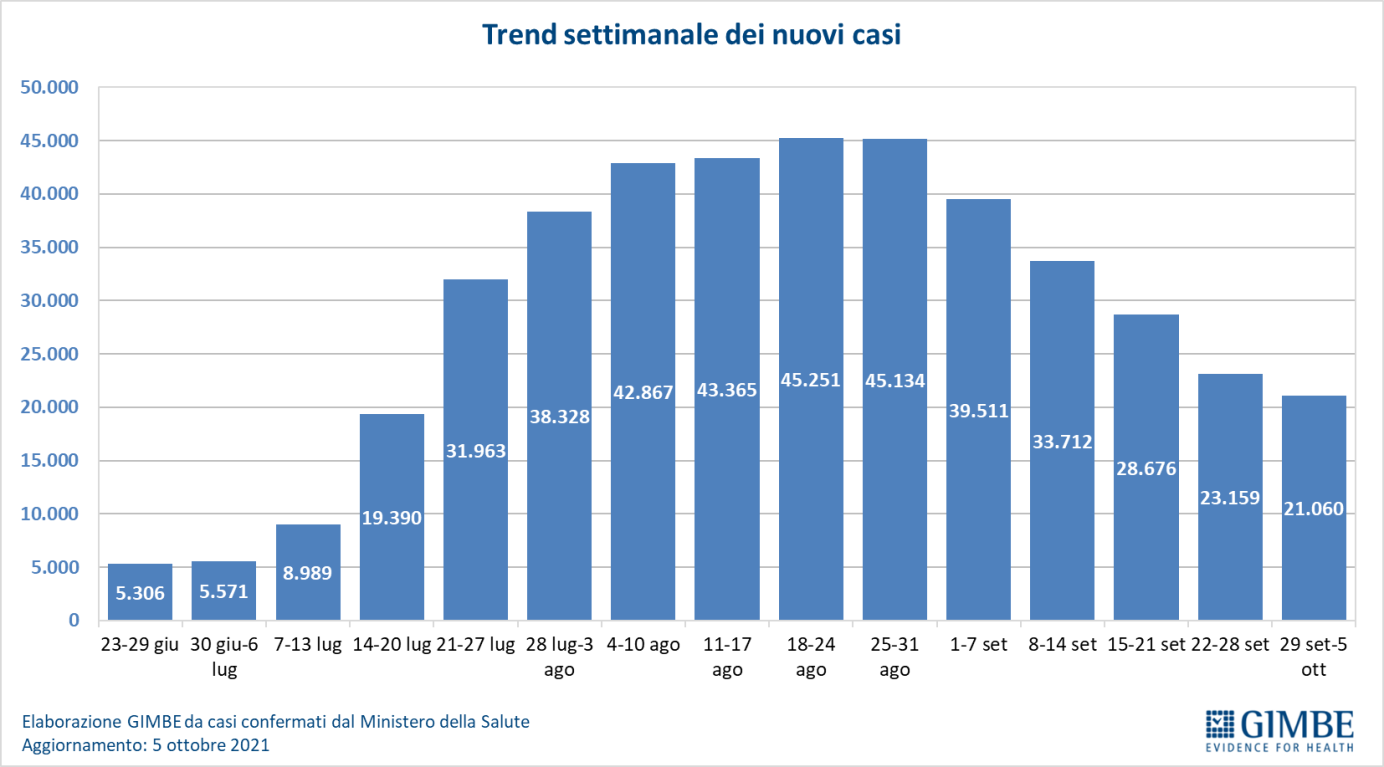
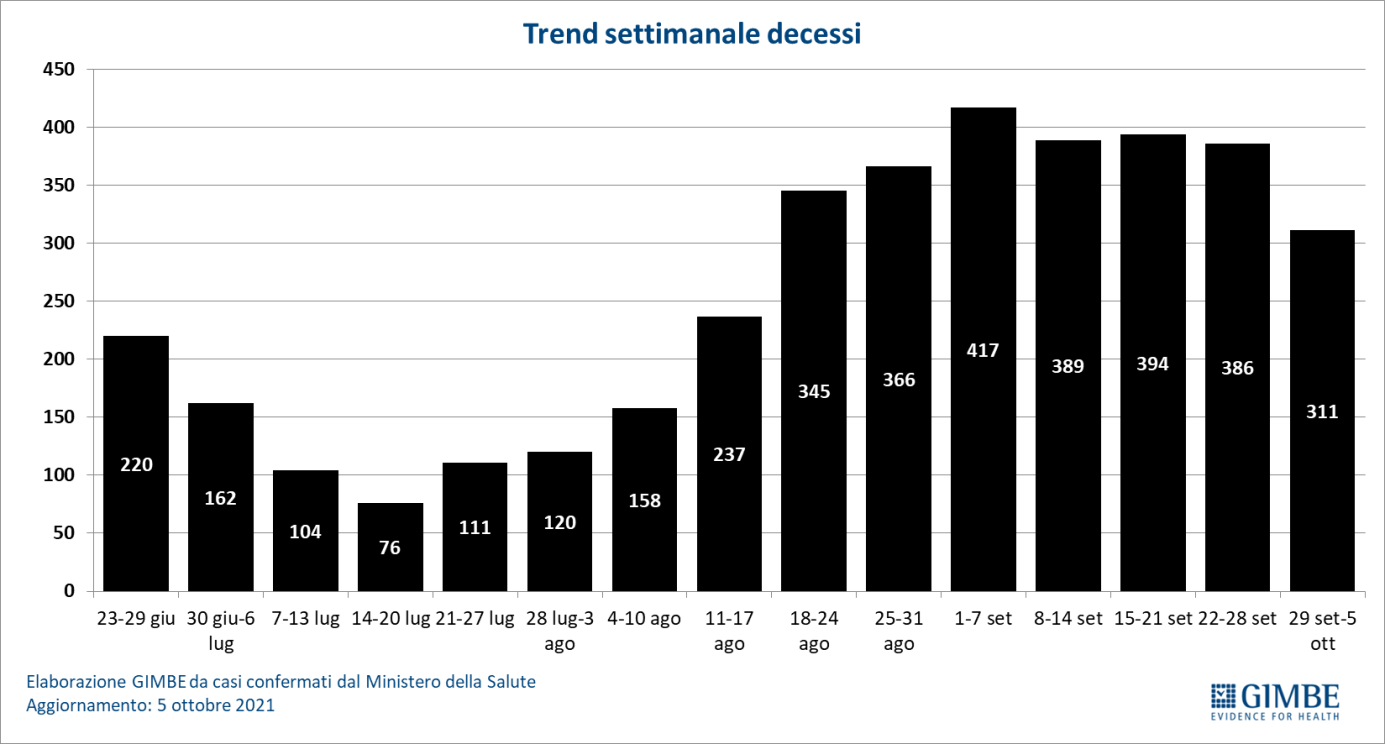
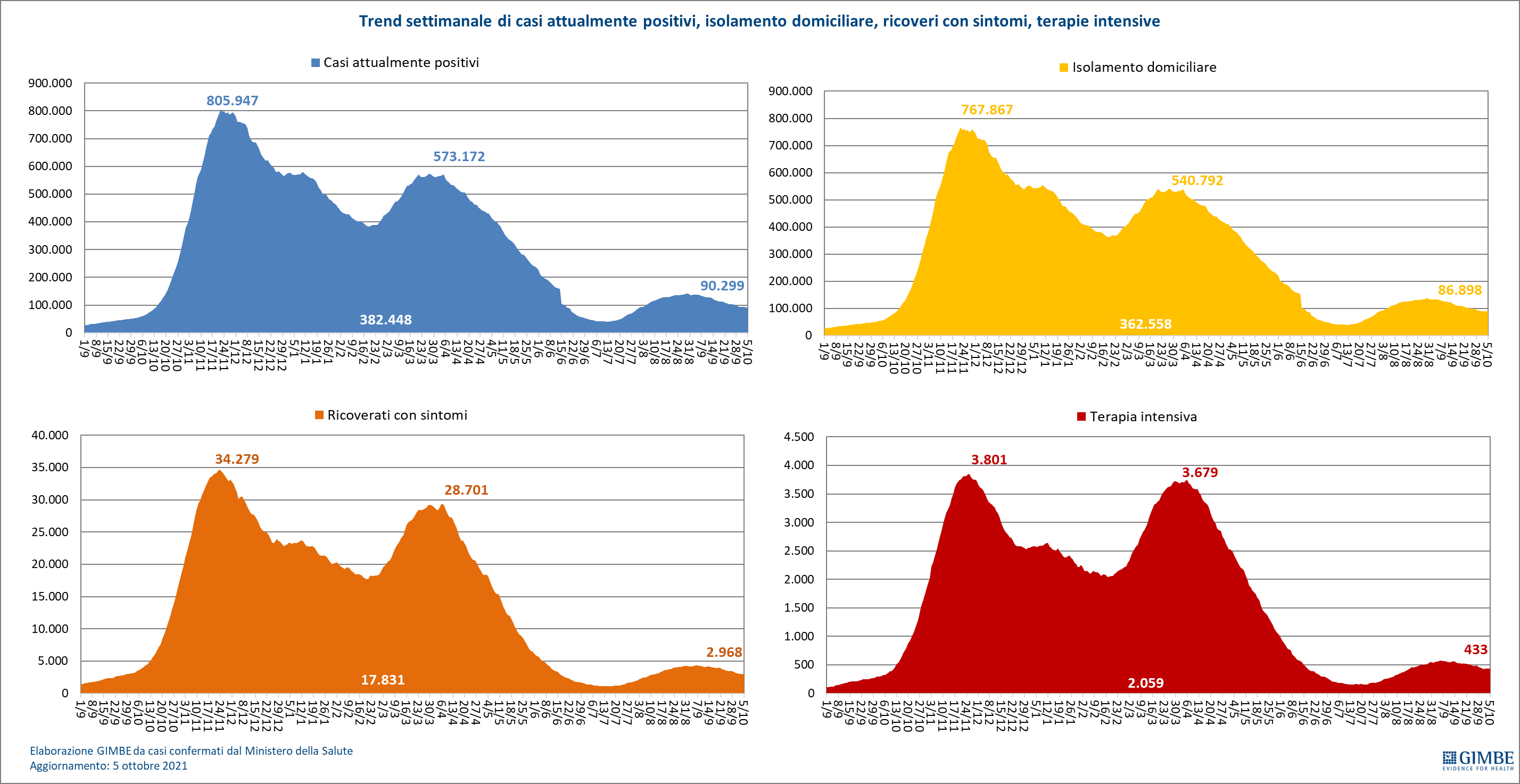
"For 5 consecutive weeks now – declares Nino Cartabellotta, President of the Gimbe Foundation – the national data shows a decrease in new weekly cases, even if in the last week, compared to the previous one, 5 Regions recorded a percentage increase in infections". The increases, which concern Basilicata (+ 73.6%), Prov. Aut. Bolzano (+ 8.7%), Prov. Aut. Trento (+ 20.9%), Sardinia (+ 5%), Valle D'Aosta (+ 64.5%) (table 1), however, remain contained in absolute terms. There are 17 provinces with an incidence equal to or greater than 50 cases per 100,000 inhabitants and none has more than 150 cases per 100,000 inhabitants. Deaths also decreased: 311 in the last 7 days (of which 22 referred to previous periods), with an average of 44 per day compared to 55 in the previous week.
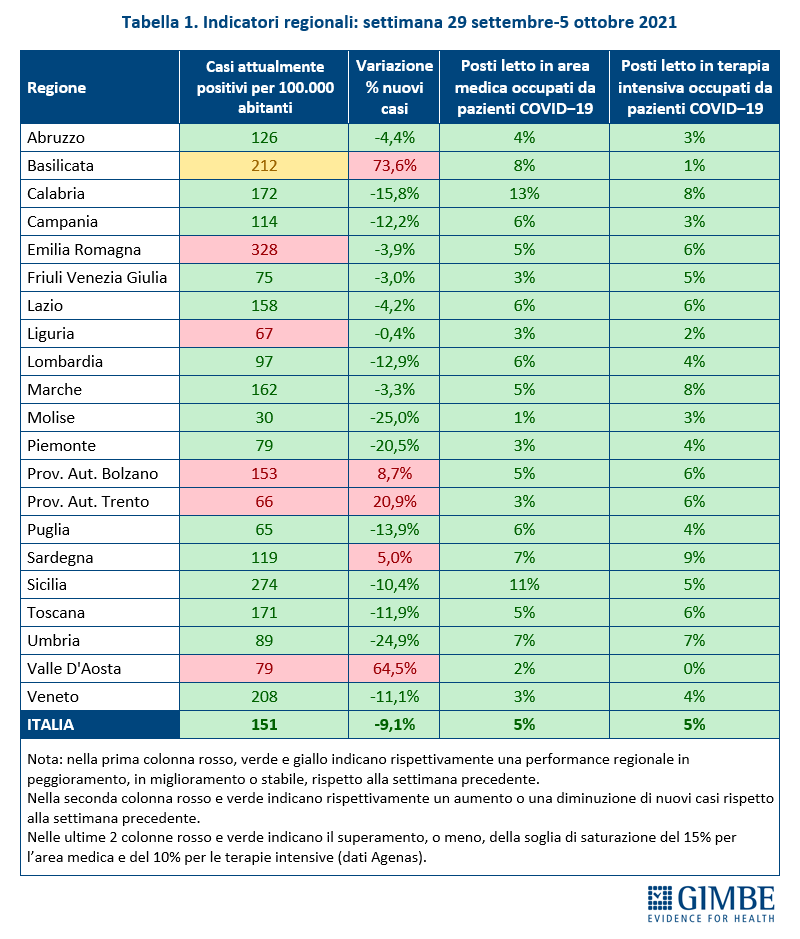
"On the hospital front – says Renata Gili, Head of Research on Health Services of the GIMBE Foundation – there is a further decline in the number of beds occupied by Covid-19 patients: compared to the previous week, they fall by 13.2% in the medical area and by 5, 7% in intensive care ». At the national level, the employment rate remains low (5% in the medical area and 5% in the critical area) and no Region exceeds the thresholds of 15% for the medical area and 10% for the critical area (Figure 4). "Daily admissions to intensive care also continue to drop – explains Marco Mosti, Operations Director of the Gimbe Foundation – with a 7-day moving average of 22 admissions / day compared to 29 the previous week".
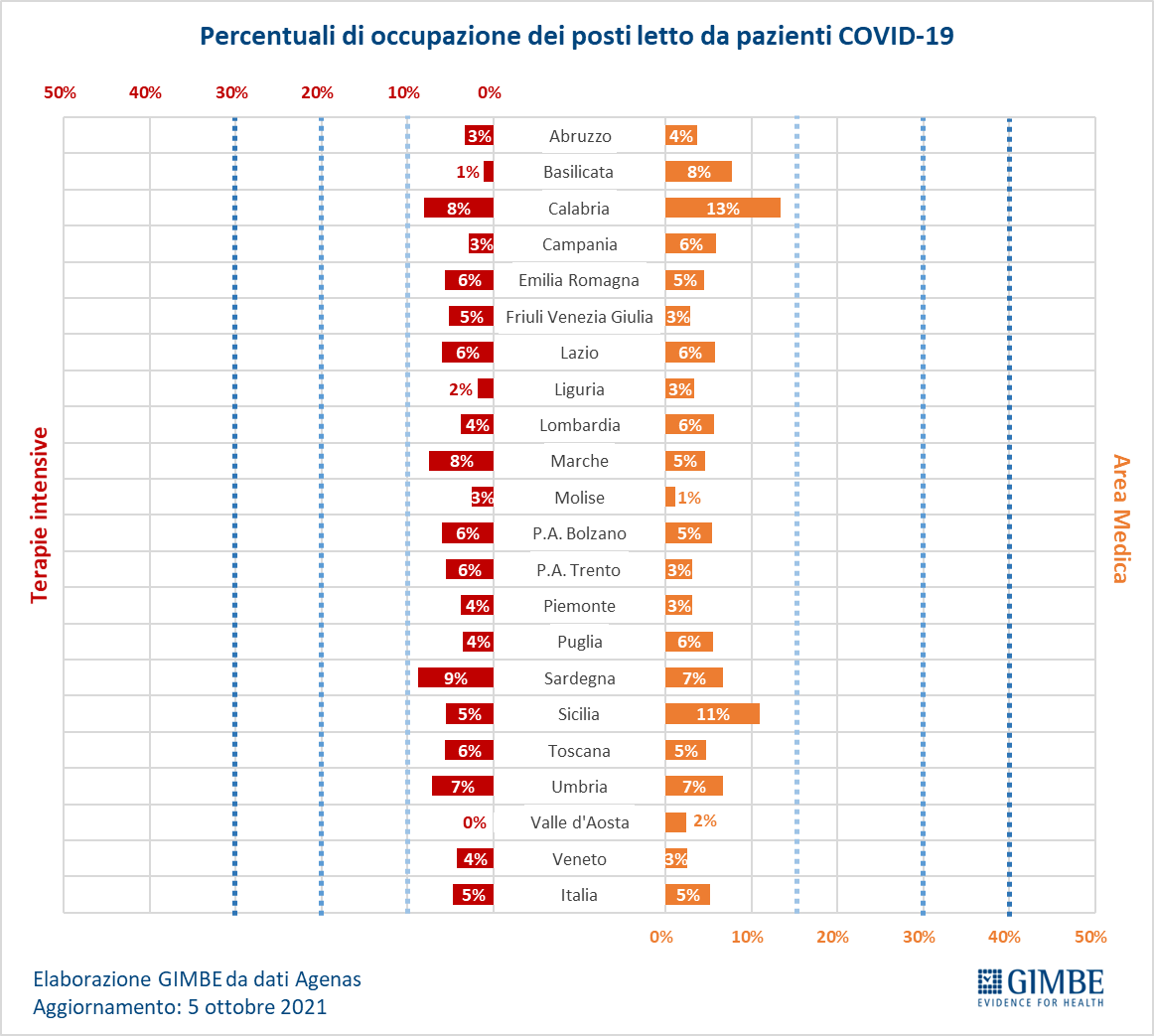
Vaccines: supplies.
As of 6 October (update 6.13 am) 98,883,319 doses have been delivered: with the delivery of 3.97 million doses in the last week (figure 5) the stocks of mRNA vaccines are still increasing, reaching 13.4 million.
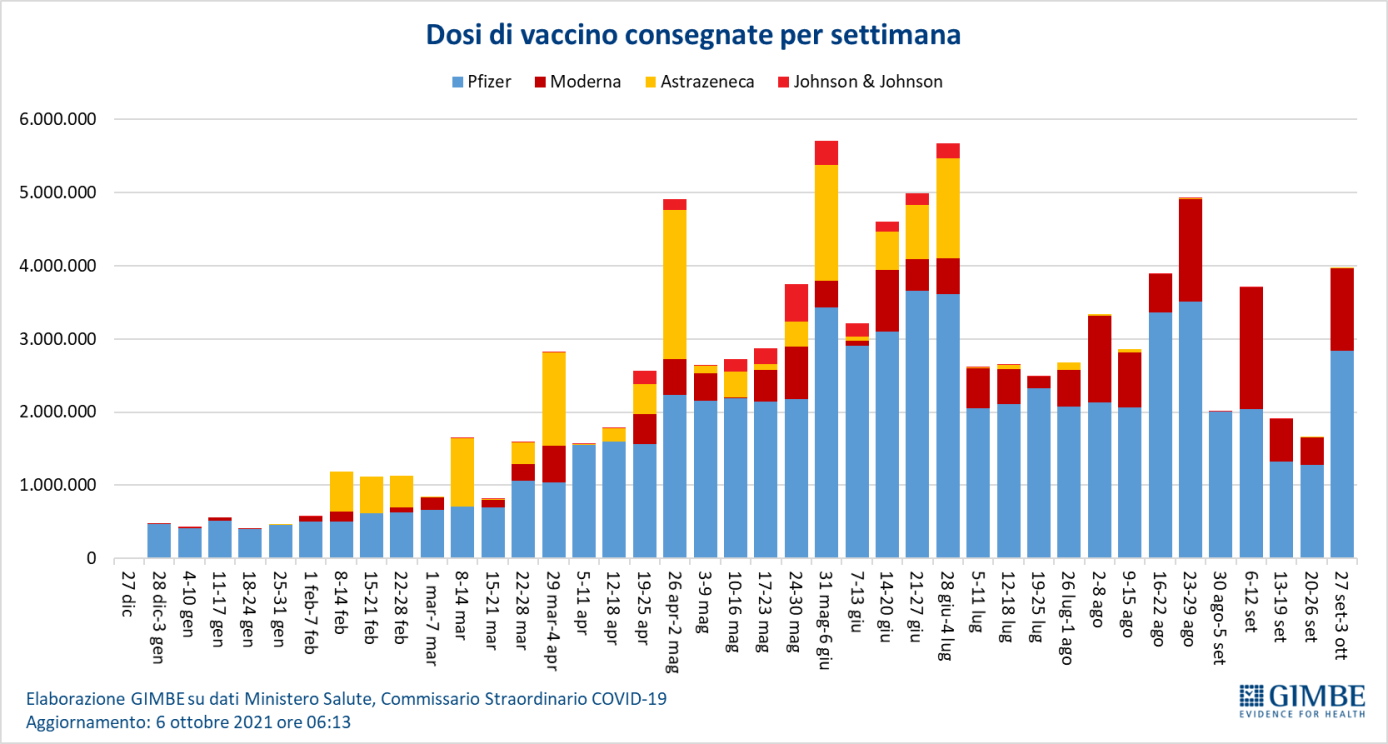
Vaccines: administrations.
As of 6 October (updated at 6.13), 76.8% of the population (45.493.296) had received at least one dose of vaccine (+452.187 compared to the previous week) and 72.4% (42.921.024) completed the vaccination cycle (+661.771 compared to the previous week) (figure 6). In the last week the number of administrations has fallen again (1,209,952) (figure 7), with a 7-day moving average of almost 160 thousand administrations / day. The number of new weekly vaccinates, after rising to 589 thousand the previous week, fell to 488 thousand (-17.1%) in the last week (figure 8), confirming for now the modest effects of the green pass on the new curve vaccinated, net of the uncertainty relating to the number of exemptions.
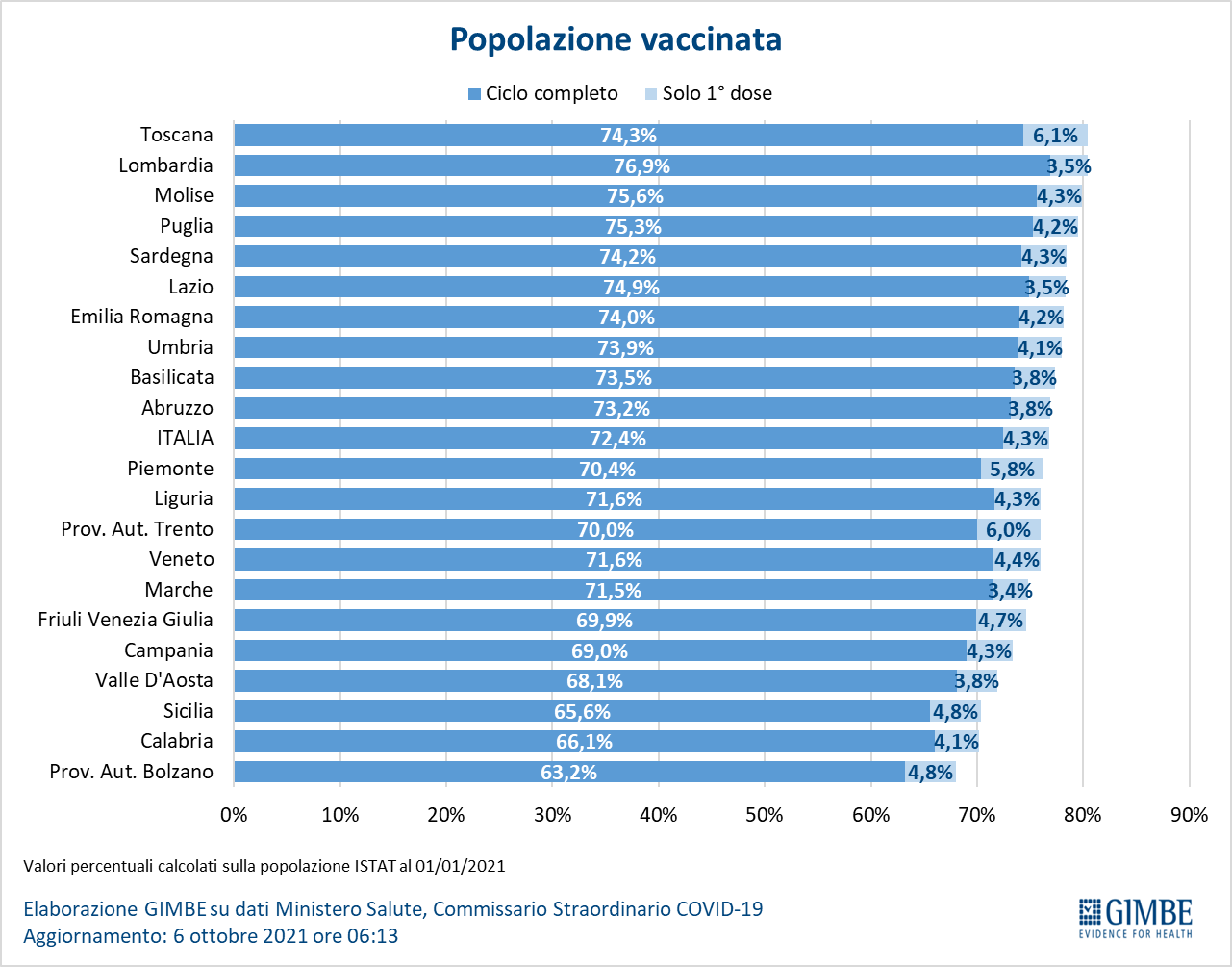
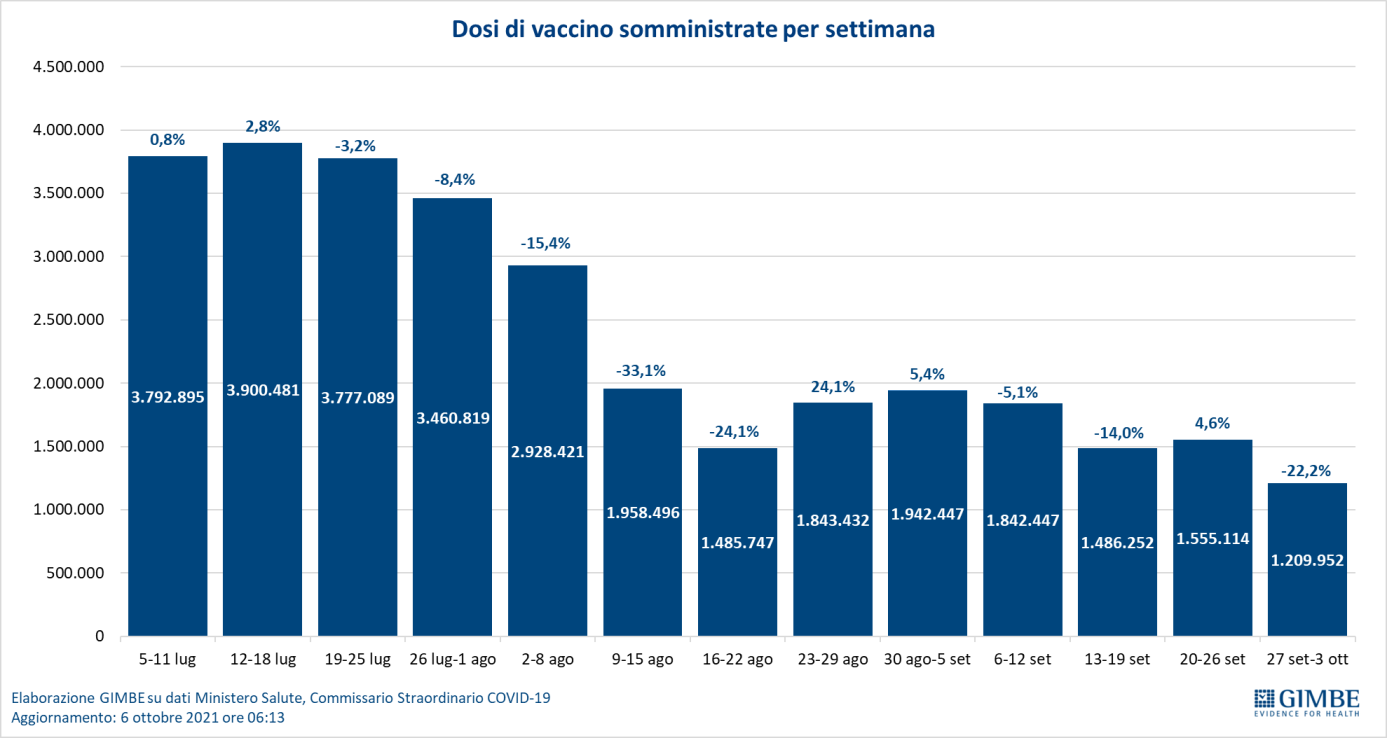
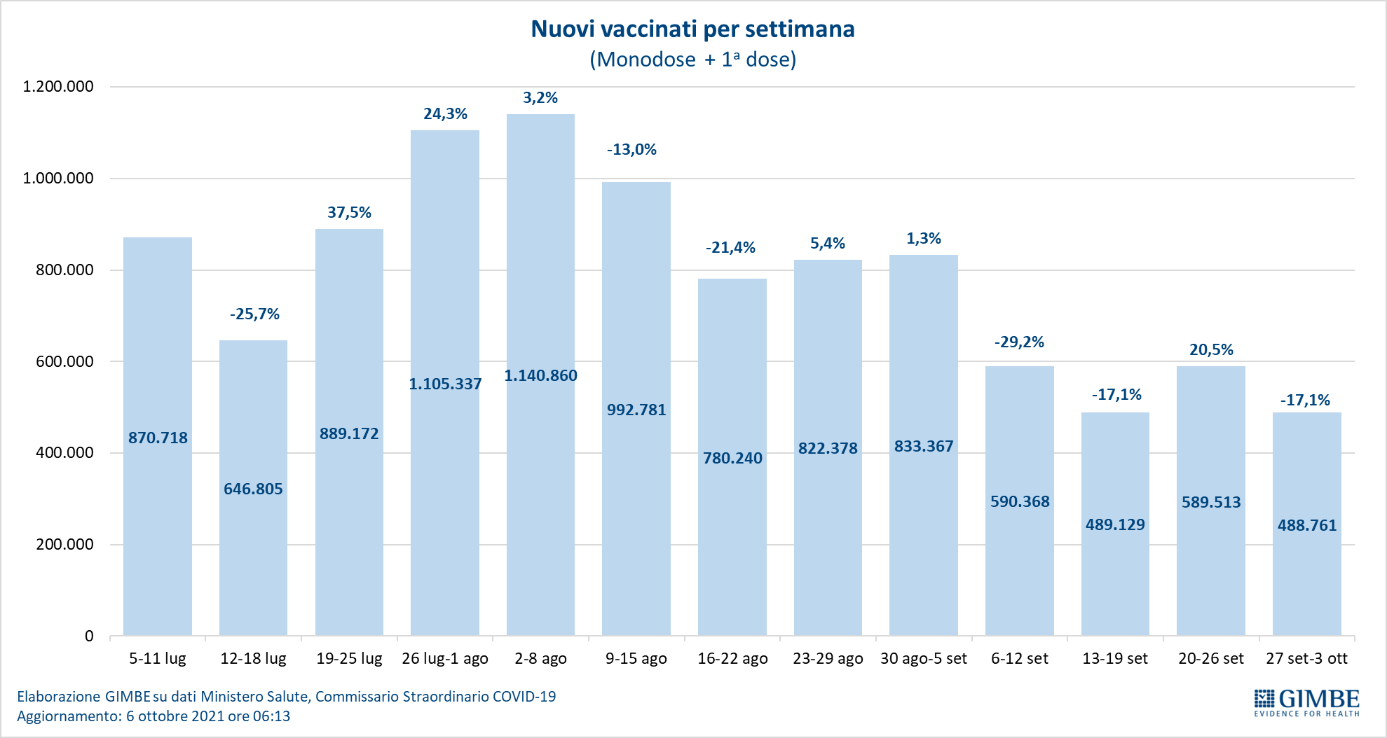
Vaccines: covers.
Vaccination coverage by age group with at least one dose of vaccine is highly variable: from 96.7% of the over 80s to 70.4% of the 12-19 group (figure 9). In general, compared to the previous week, there are modest increases: the number of vaccinated people with at least one dose increases by 1.6% in the 30-39 range, by 1.5% in the 20-29 range, by 1, 2% in the 40-49 range, 1.1% in the 12-19 range, 0.9% in the 50-59 range, while in the over 60s the increase does not reach 0.5%. In particular, for the categories at higher risk of severe disease, 3.4 million (12.3%) over 50s still have not completed the vaccination cycle (figure 10), of which 2.59 million have not even received a dose of vaccine, with significant regional differences (from 15.1% in Calabria to 5.6% in Puglia) (figure 11).
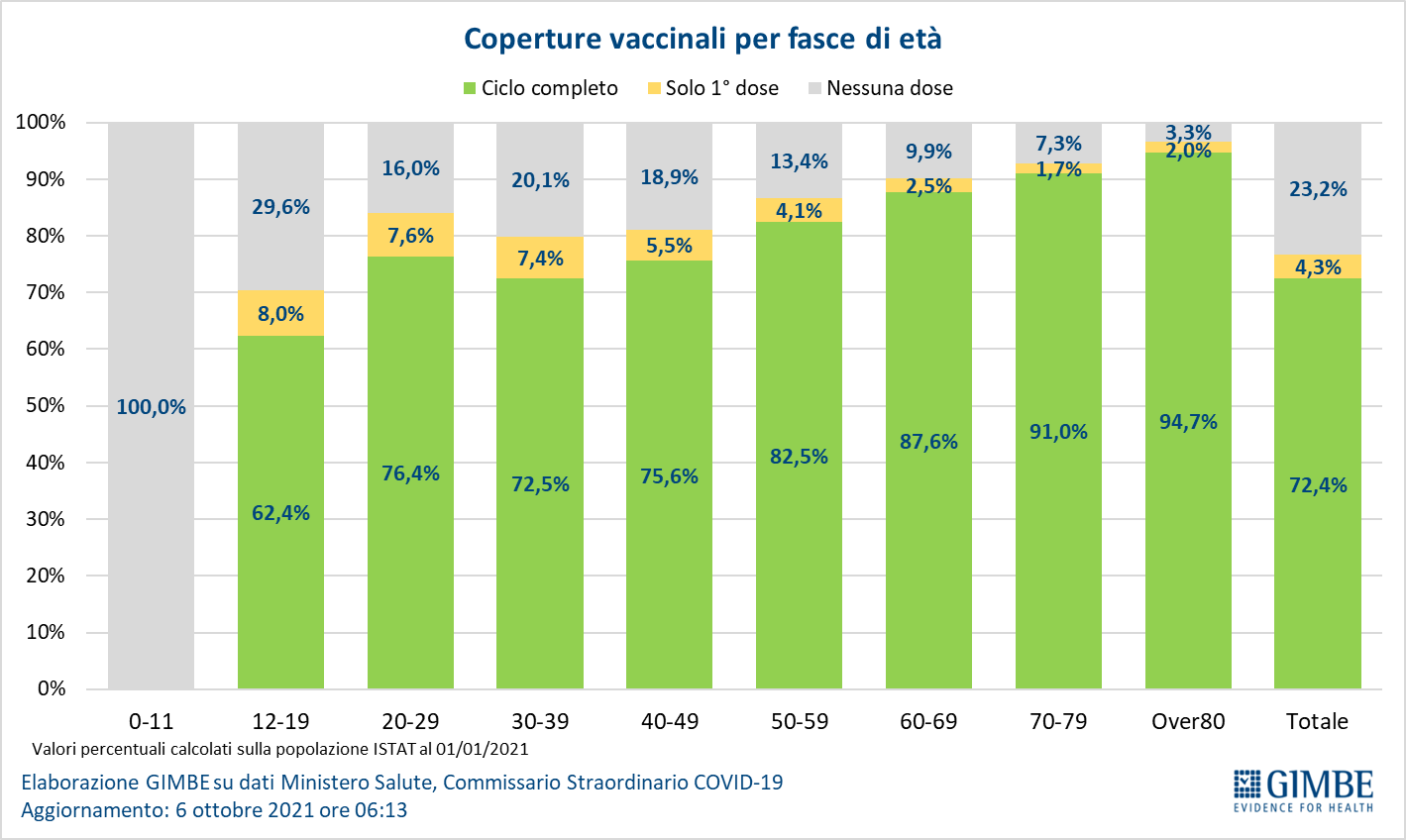
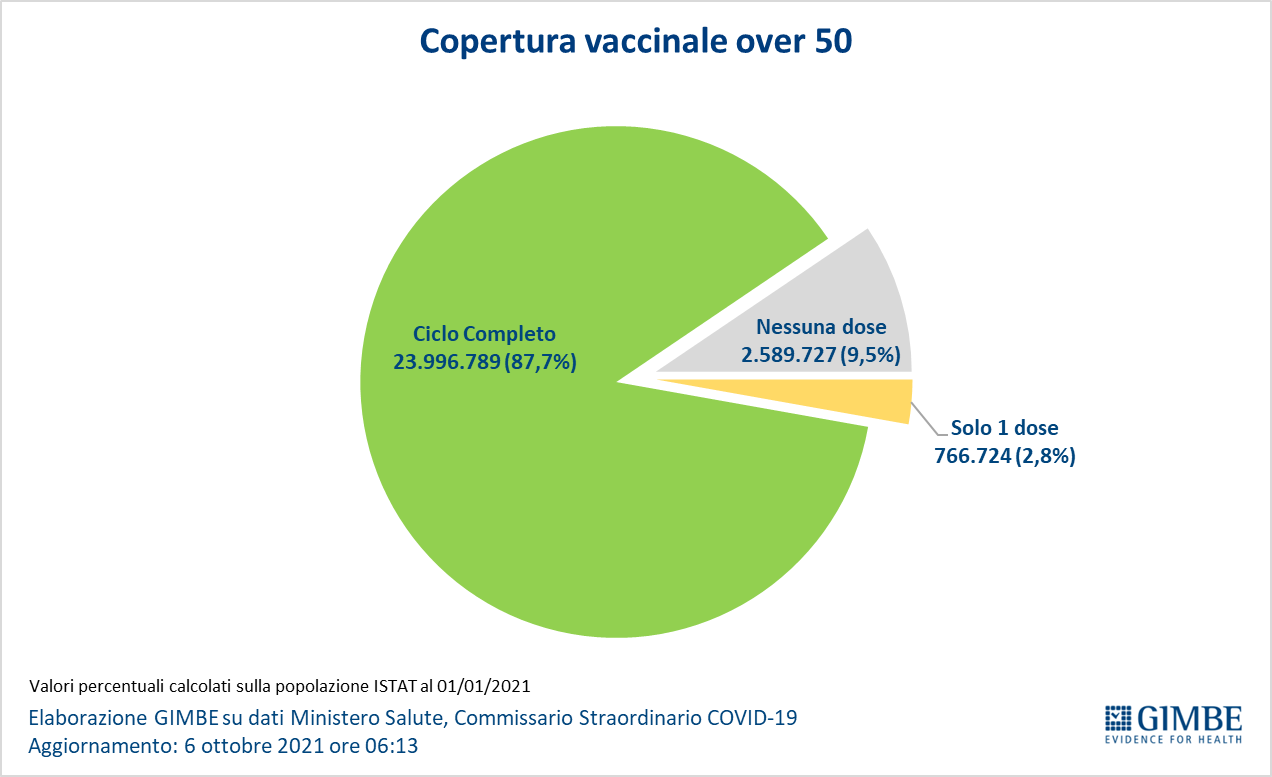
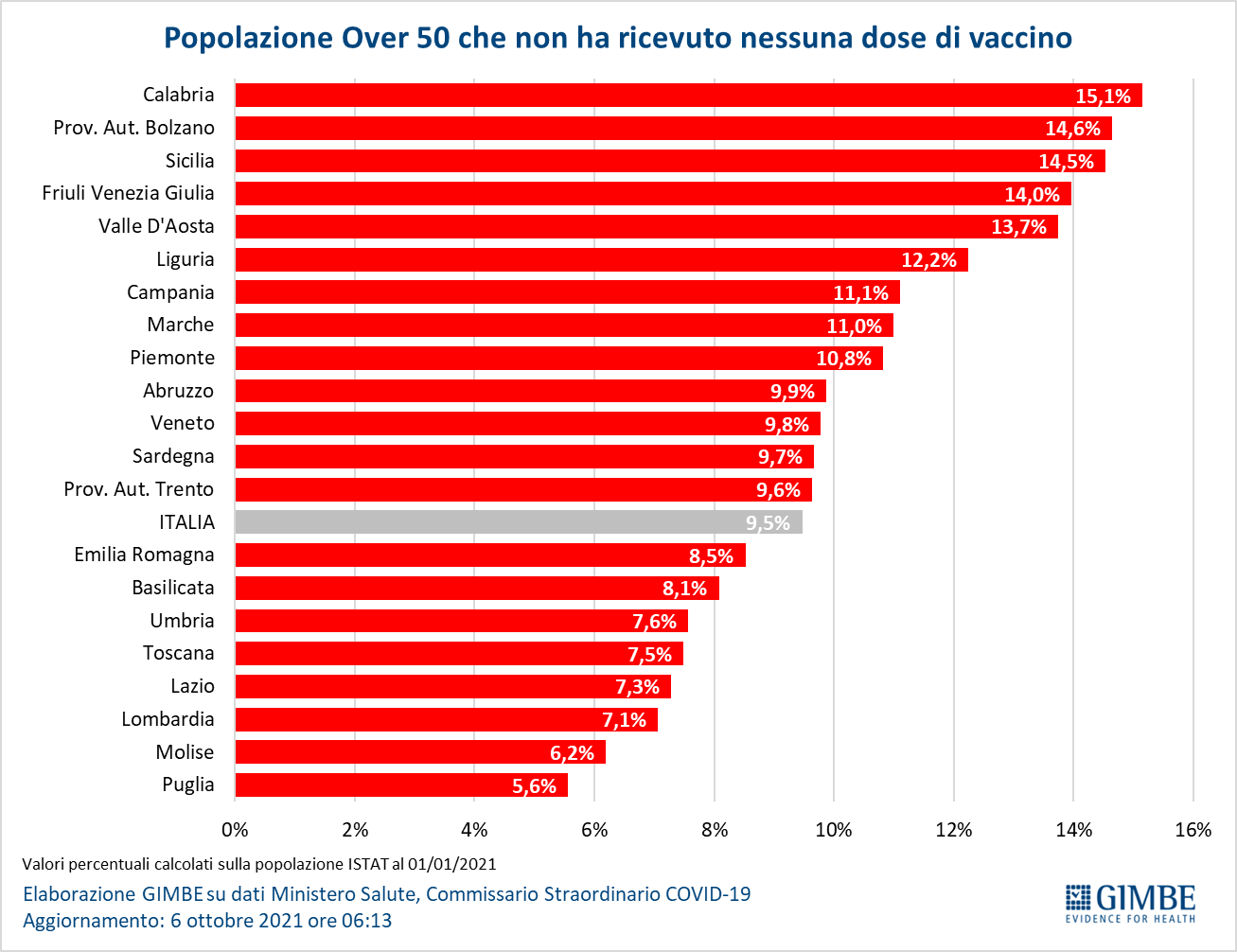
Vaccine efficacy.
The effectiveness of the vaccine on the diagnosis of SARS-CoV-2 decreased from 88.5% (period 4 April-11 July) to 77.2% (period 4 April-26 September), particularly in the age group 12-39 years where it dropped up to 67.2% (period 4 April-29 August) – probably due to the "summer" effect – and then climbed up to 72.6% (period 4 April-26 September) (figure 12). Vaccination efficacy is confirmed, however, very high in reducing deaths (94.8%) and severe forms of disease that require hospitalization in the medical area (92.6%) and in intensive care (94.9%). . However, starting from mid-August, while remaining above 90%, there is a slight but constant reduction trend for hospitalizations (-2.3%), intensive care admissions (-2.1%) and deaths (-2, 4%).
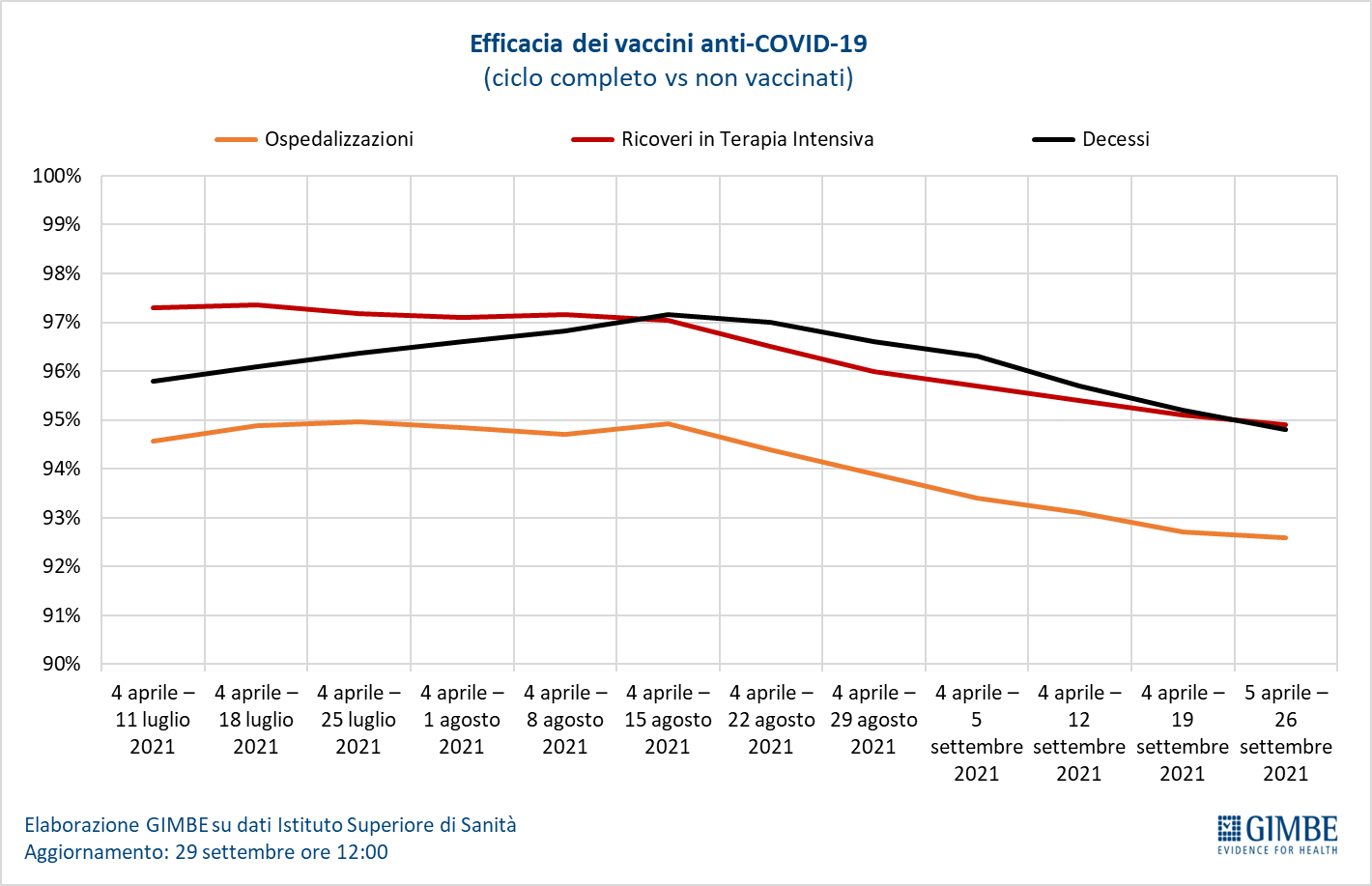
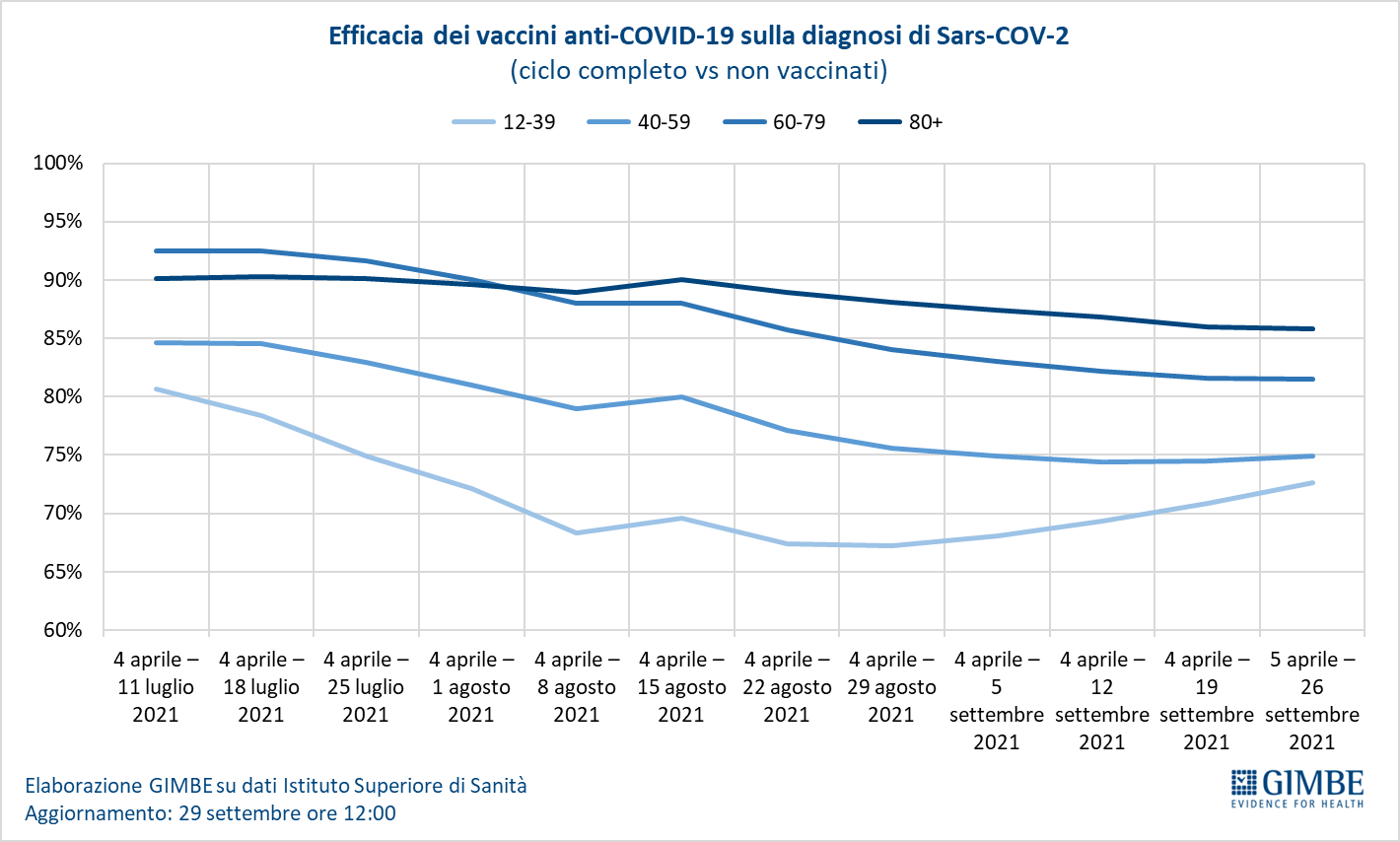
This data is in line with both studies conducted in other countries that document a reduction in vaccination efficacy starting 6 months after the completion of the cycle, in particular against the delta variant, and with the report "Impact of Covid-19 vaccination on the risk of SARS-CoV-2 infection and hospitalization and death in Italy ”published yesterday by the Istituto Superiore di Sanità and the Ministry of Health. Comparing the data for January-June 2021 (predominant alpha variant), with those of July-August 2021 (predominant delta variant), there is a reduction in efficacy which is minimal on severe forms of the disease (91.7% vs 88 , 7%) and more marked against infection (67.1%, vs 84.8%). Furthermore, in people with comorbidities, the effectiveness in preventing infection drops from 75% after 28 days from the second dose to 52% after about seven months.
In any case, in people vaccinated with a complete cycle compared to those not vaccinated, the incidence of diagnosis and especially of serious illness and death is significantly reduced: in the various age groups, the diagnoses of SARS-CoV-2 are in fact reduced by the 79-84%, ordinary hospitalizations of 88.6-95.6%, those in intensive care of 90.7-100% and deaths of 91.5-100% (figure 13).
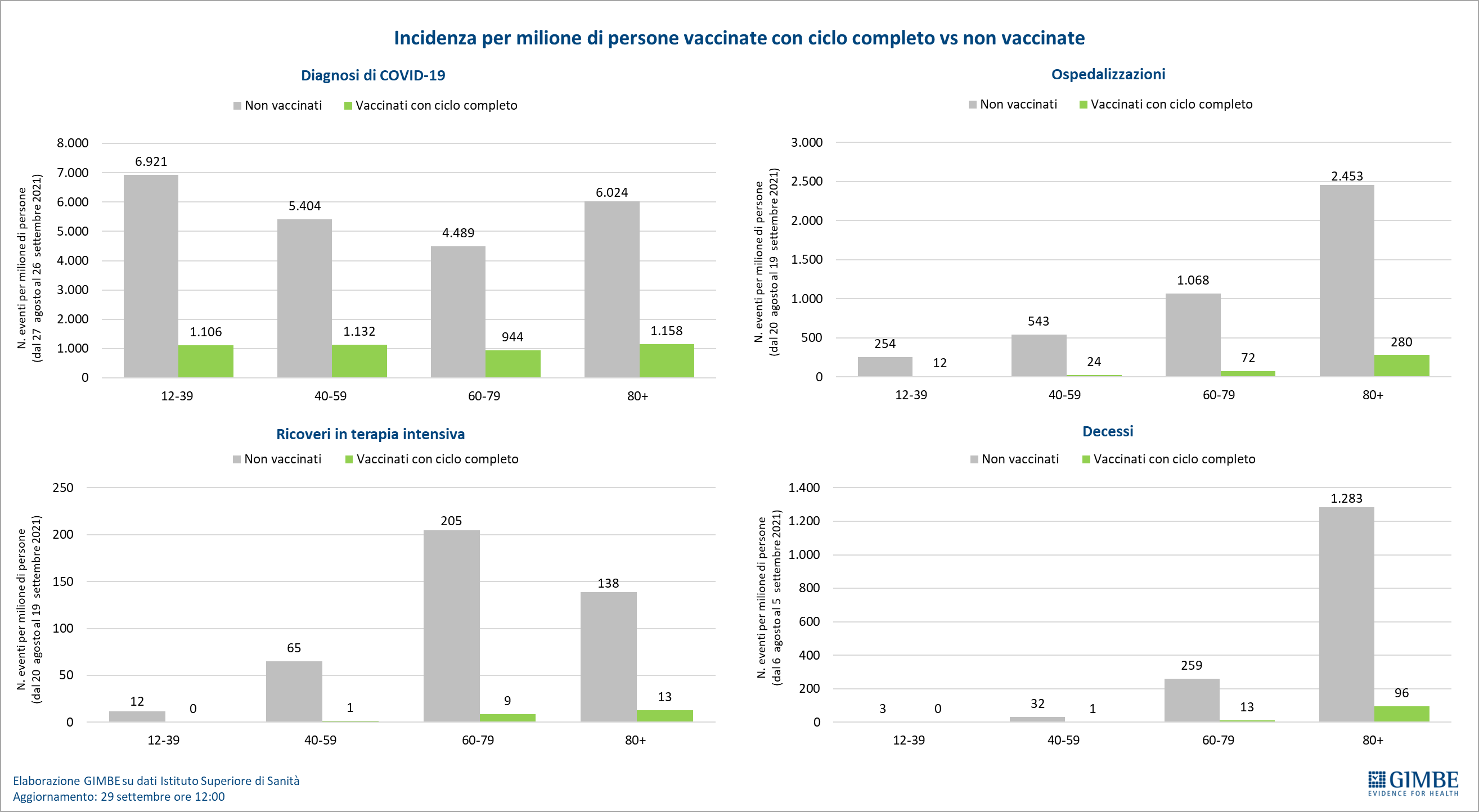
Vaccines: third dose.
On 4 October, the European Medicines Agency (Ema) concluded the evaluation of the additional dose of vaccine (Pfizer or Moderna) for immunocompromised patients, recommending its administration within 28 days of completing the vaccination cycle, as already established in Italy by the Ministry's Circular della Salute of 14 September 2021. The EMA also suggests considering the administration of a booster dose with the Pfizer vaccine in all people aged ≥18 years, after at least 6 months from the second dose, leaving individual countries full decision-making autonomy on age groups and priority categories.
To date, the Circular of the Ministry of Health of 27 September 2021 provides for the use of both Pfizer and Moderna for booster doses in specific categories of the population. In a first phase over 80 and guests and health and social-health personnel of the RSA; subsequently health workers with priority for those over 60, or with concomitant and vulnerable pathologies to severe forms of COVID-19, or with a high level of exposure to infection. Overall, the population that can be vaccinated with the third dose is almost 7.6 million people (figure 14) who have been administered almost 185 thousand doses since 14 September with a coverage rate of 2.4%, and considerable regional differences: from 9% of Molise to 0% of Valle D'Aosta (figure 15).
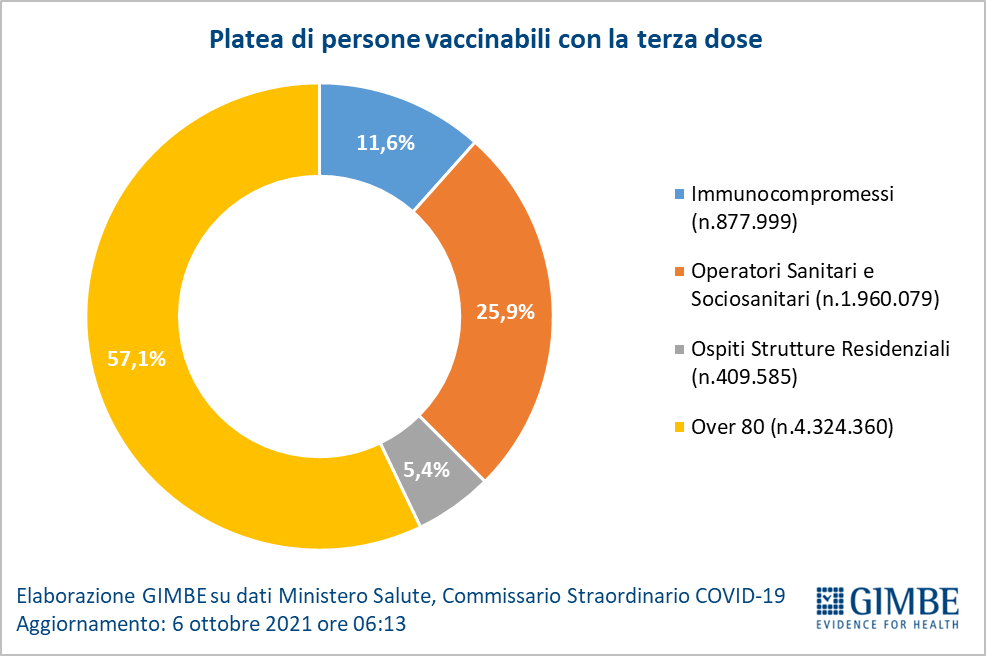
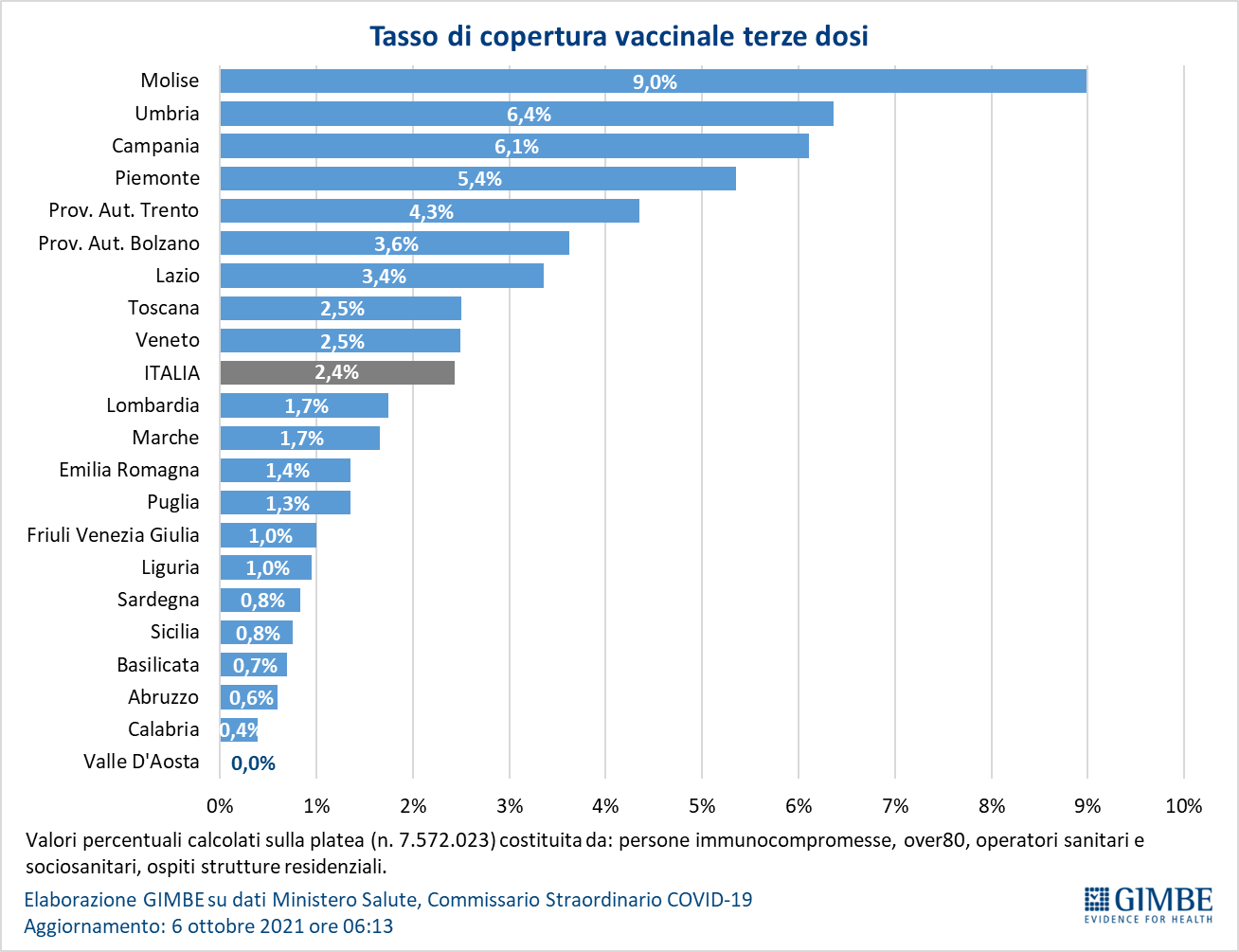
"The absolute priority – concludes Cartabellotta – remains that of administering the complete cycle to the entire vaccinable population, in particular to the over 50s. and deaths, strategic planning is needed to deliver the booster dose to the general population. Also to avoid, after the green light of the EMA for over 18s, that the Regions proceed in no particular order, without following the priorities based on individual risk ». This is why the Gimbe Foundation proposes four integrated actions:
- accelerate the administration of the third dose to the priority categories given the wide availability of doses (13.4 million) and the winter season just around the corner;
- progressively broaden the population vaccinated with the booster dose to the population groups at risk of serious illness and death, starting with the age group 70-79 and then the age group 60-69 and 50-59, and giving priority in each group to patients with concomitant pathologies;
- schedule the active call for all over 50s six months after the completion of the cycle;
- extend the obligation of the booster dose for healthcare professionals, in order to ensure safety for patients and reduce the risk of limiting the provision of healthcare services for non-Covid-19 diseases, given that vaccination efficacy on infection by delta variant is around 67%.
This is a machine translation from Italian language of a post published on Start Magazine at the URL https://www.startmag.it/sanita/a-che-punto-e-la-copertura-vaccinale-in-italia-report-gimbe/ on Sat, 09 Oct 2021 05:57:22 +0000.
